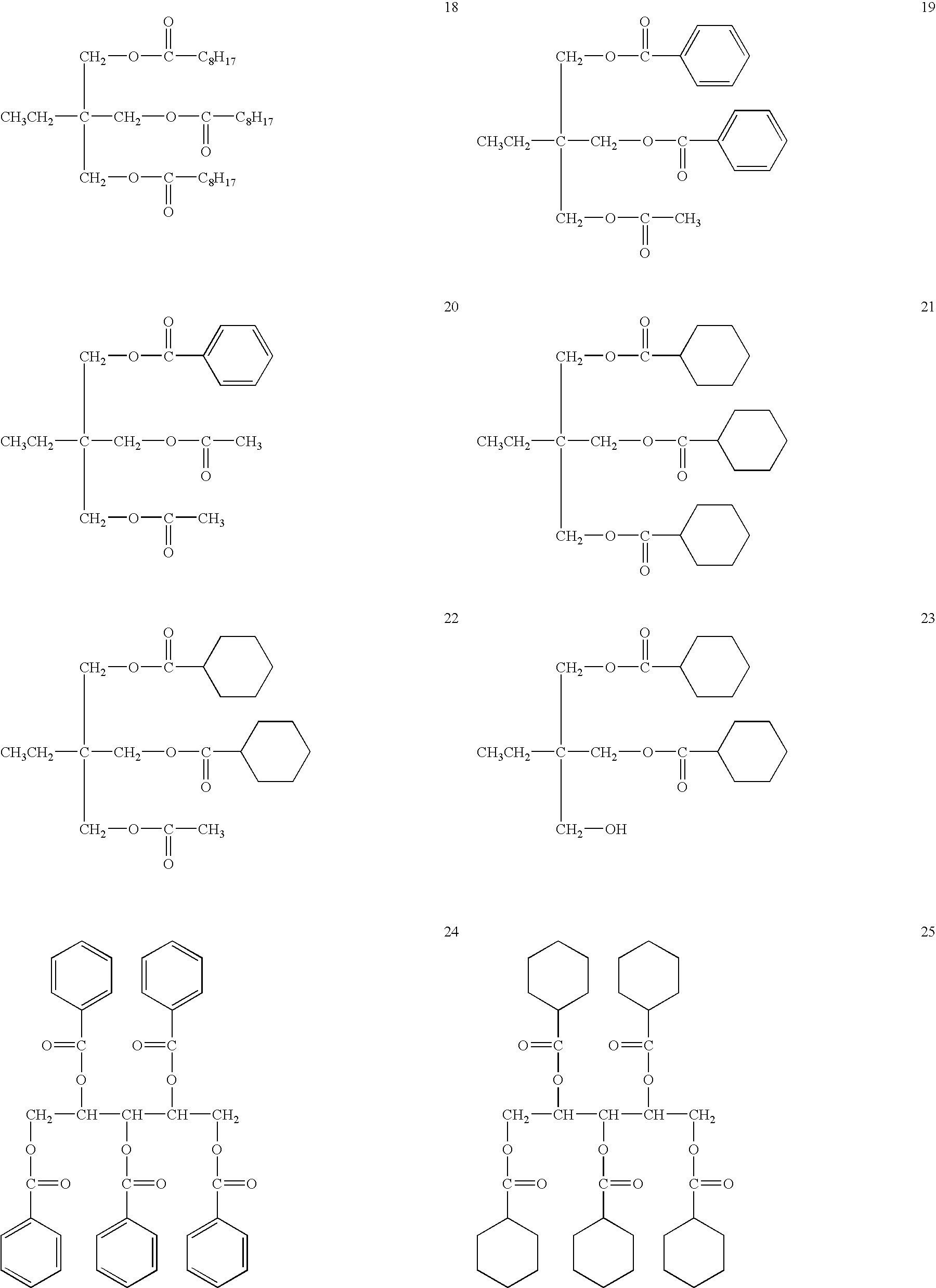Antireflection film, production method of the same, polarizing plate and display
a production method and anti-reflection technology, applied in the field of anti-reflection film, a production method of the same, a polarizing plate and a display, can solve the problems of deterioration of anti-reflection film hardness, scratch resistance, and film hardness not fully enough, so as to improve light resistance and flatness, improve scratch resistance, and improve the effect of scratch resistan
- Summary
- Abstract
- Description
- Claims
- Application Information
AI Technical Summary
Benefits of technology
Problems solved by technology
Method used
Image
Examples
examples
[0400] The present invention will further be explained using the following examples, however, the present invention is not limited thereto.
[0401] The following material were loaded in turn and sealed in a container and the temperature was raised from 20° C. to 80° C. The loaded materials were stirred in the container at 80° C. for three hours, whereby the cellulose ester was completely dissolved. Silicon dioxide particles were added by preliminary dispersing the particles in a liquid containing a solvent to be used and a small amount of cellulose ester. Obtained liquid was filtered using Filter Paper No. 244 produced by Azumi Filter Paper Co., Ltd. to obtain Dope A.
(Preparation of Dope A)
[0402] Cellulose ester (cellulose triacetate; the acetylation degree of 2.9) 100 weight parts
[0403] Trimethylolpropane tribenzoate 5 weight parts
[0404] Ethylphthalylethyl glycolate 5 weight parts
[0405] Silica particles (Aerosil R972V produced by Nippon Aerosil Co., Ltd.) 0.1 weight parts
[040...
example 2
[0484] Using hard coat films 3 and 16 produced in example 1, antireflection films were prepared as described below.
>
[0485] High refractive index layers 2-1 to 2-27 were produced in the same manner as high refractive index layer 1 except that the metal oxide particles, metal compound, ionizing radiation curable resin and surfactant used in high refractive index layer coating composition 1 were changed as shown in Table 3.
>
[0486] On each of the high refractive index layer 2-1 to 2-27, low refractive index layer coating composition 1 used in example 1 was applied by an extrusion coater and dried at 100° C. for 1 minute, followed by being irradiated with 0.1 J / cm2 of UV rays to harden the layer. The layer was further heat cured at 120° C. for 5 minute. The layer thickness was 95 nm. Thus, antireflection films 26-56 as shown in Table 4 were obtained.
>
[0487] Each of antireflection films 26-53 (length: 1000 m) was wound to a plastic core and was subjected to a heat treatment for 4 days ...
example 3
[0494] Using antireflection films 1-56 produced in examples 1 and 2, polarizing plates were produced as described below, each of which was installed in a display panel to evaluate the visibility.
[0495] Polarizing plates 1-56 were produced by using each antireflection film described above and a cellulose ester optical compensation film, KC8UCR-5 (produced by KONICA MINOLTA, OPTO, INC.).
(a) Production of Polarizing Film
[0496] 100 weight parts of polyvinyl alcohol having a saponification degree of 99.95% and polymerization degree of 2400 (hereafter referred to as PVA) was mixed with 10 weight parts of glycerin and 170 weight parts of pure water. The mixture was melted, kneaded, defoamed and melt-extruded from a T-die on a metal roll to form a film. The film was dried and heat treated to obtain a PVA film having an average thickness of 40 μm, water content of 4.4% and a film width of 3 m.
[0497] The PVA film was continuously subjected to preliminary swelling, dyeing, uniaxial wet str...
PUM
 Login to View More
Login to View More Abstract
Description
Claims
Application Information
 Login to View More
Login to View More - R&D
- Intellectual Property
- Life Sciences
- Materials
- Tech Scout
- Unparalleled Data Quality
- Higher Quality Content
- 60% Fewer Hallucinations
Browse by: Latest US Patents, China's latest patents, Technical Efficacy Thesaurus, Application Domain, Technology Topic, Popular Technical Reports.
© 2025 PatSnap. All rights reserved.Legal|Privacy policy|Modern Slavery Act Transparency Statement|Sitemap|About US| Contact US: help@patsnap.com



